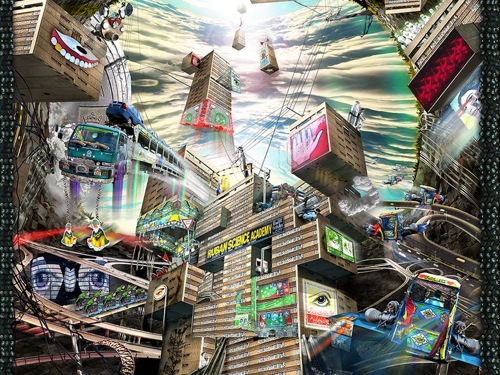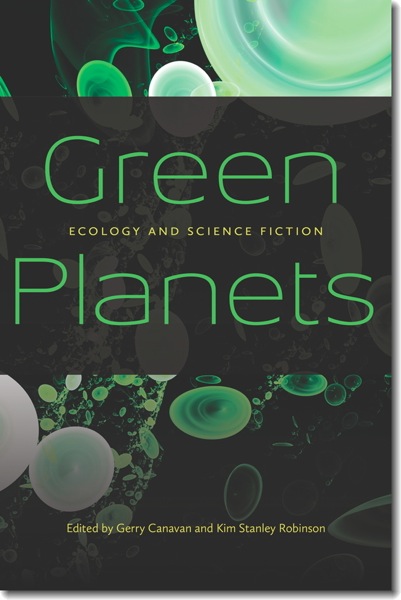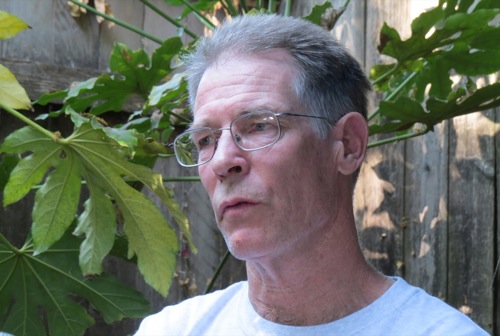"Shaman" meets "2312" and more
Submitted by KimonKim Stanley Robinson's latest novel, Shaman, has now been released in paperback by Orbit!
What's it about? In just three paragraphs, you have it from Stan himself in this little piece for Kindle Amazon.
"When a five thousand year-old body emerged from a glacier in the Alps in 1991, it immediately became one of the greatest finds in archeological history, because all the dead man’s gear had been frozen and preserved with him. [...] I thought He was just like me."
Stan and Ursula K Le Guin (do I need to introduce her?) finally did a first event together after knowing each other for nearly 40 years! In February, the Spring Creek Project sponsored a symposium entitled "Transformation Without Apocalypse: How to Live Well on an Altered Planet", at Oregon State University. Stan and Ursula read from their own work and from each other's work, with passages from 2312, Shaman and poems. This is a historic appearance, very heartwarming, although the atmosphere in the room can't be felt through that video alone I suppose.
More videos of older events have surfaced too. Stan participated in the Arizona State University Origins project, with the Great Debate Transcending Our Origins: Violence, Humanity, and the Future. He was on the panel "The Future: From Medicine and Synthetic Biology to Machine Intelligence" along with scientists and notable experts Richard Dawkins, Craig Venter, Esther Dyson, Eric Horvitz, George Poste and Randolph Nesse discussing the future of new biomedical and robotic technologies and their impact on humanity. The whole panel video was posted on the internet, you can watch it here: Part 1 & Part 2. Stan's 7-min pitch of how we could live fuller liveshas been posted separately, it's a concentration of many of the ideas he has been putting forward in recent years:
So: Laws and "software" of how we run our societies as technologies. Constitutions as science fiction concepts. "Government of the people, by the people, for the people, shall not perish from the earth" as a science fiction short story (future tense). Those are some ideas! In a related interview for Decode DC, "What can Mars teach us about politics on Earth?" (direct audio), Robinson discusses these ideas and others that he has developed throughout his career -- for example the citizens' duma in Blue Mars.
In October 2013, Stan and social media professor McKenzie Wark did a discussion at Eugene Lang College in New York. Stan read from Shaman and they discussed in depth the thoughts behind the book, how we used to live, what technologies we developed, Neanderthals, and of course taking it from there and on to 2312 and our future, and also on writing SF and "speculative realism" and on readers of SF and fantasy. Part 1 here; Part 2 is audience Q&A. The sound on the video is not that good.
Additionally, McKenzie Wark interviewed Stan for the Los Angeles Review of Books: "A Functional Form Has Its Own Beauty". A great interview, some selected parts:
Finally, somebody asks the sex question! -- an aspect of 2312 I felt was not discussed enough:
I feel I’ve been taught a lot about gender by science fiction, including books by Joanna Russ, Samuel Delany, Ursula Le Guin, and others, and also by the science-fiction community, which has a flourishing LGBT component, pretty well integrated with the rest of it. Also I was very struck by my own experiences as a “Mr. Mom” when I did the home parenting for our two children, especially when they were infants and toddlers. I wanted to write about that again, as I did in the Science In the Capital trilogy, but from a different angle, to express the feeling that grew in me that gender as feeling is labile and not related to bodies per se.
A great description of how essentially all of his novels work:
I’ve been much influenced by Bahktin’s image of the novel as polyvocal, what he calls a heteroglossia (another great word!), so that it isn’t so much the novelist as a single visionary but rather something more like an old-time telephone switchboard operator, plugging in different voices and then orchestrating the flow of that chorus, so to speak. So you get chances for different points of view to speak or argue in dialogues or larger discussions, and the plots themselves also express these arguments in actions.
On writing a lot about everyday habits:
As for changing one’s habits, that is so mysterious. Again from Proust; there is the moment when you are cast into a new situation and have to change habits, and I think it was Beckett in his slim book on Proust who spoke of these moments as the true existential exposure, the naked times when you are alive without the protection of your habits, and have to think what to do moment by moment, actually decide, until you settle into (I think Beckett called it exfoliating) into a new set of habits and are somewhat protected again from that existential nakedness. This seems right to me, this is how it has felt for me, and I am very interested to try to write these moments, and present these moments as central to a plot.
On the scientific "vs" the religious world views:
Not only in Shaman but in the rest of my science fiction, I’ve been interested to cross all these ways of knowing, to think about science as a kind of religious activity, and definitely as a secretly hegemonic culture within our other various cultures, while at the same time thinking about Buddhism or art as versions of scientific thinking, or some other permanently valid way of looking at things. The permanent necessity of philosophy and art, basically, so that we can decide what to do — that isn’t a question science takes on or wants to take on.
Often in my novels all these aspects are mashed together in the characters’ lives, and in the plots.
On using words like Coriolis and katabatic a lot (I love how McKenzie Wark has spotted this!):
I like to use words out of the sciences that particularize physical processes (or generalize them) in ways ordinary language doesn’t usually. In fact many of these words are simply Greek or Latin, or mash-ups of the two languages, but they suggest a scientific precision that strikes me as both writerly (like, say, Joyce) and also comic, in the sense of Mr. Spock explaining his Spocklike thinking. Hippocampus, de-intensification, hierarchicalization, etc., etc., it goes on and on and is both funny and sharp, and musical too, in ways I like.
Finally, the calendar on the left has been updated with summer and fall events, including a European tour for the Worldcon in August and more! There's also a 2015 event -- more on that later.



